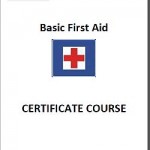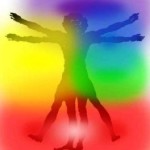What to do with breathing difficulties
Published on 19 November, 2012 | first aid
Breathing Difficulties
Background
Respiration allows a person to replenish their body by breathing in Oxygen for fuel, and exhaling Carbon Dioxide as waste. It only takes 3 minutes before the cells in our bodies start to die as a result of Oxygen starvation.
Symptoms
Respiratory problems can be the result of any number of conditions, such as a result of an injury that has damaged the chest wall, or a disease such as cancer or emphysema. Other breathing problems can be more treatable, such as asthma (refer to the previous condition) or hyperventilation both of which can have a rapid onset.
Treatment
Abdominal Thrusts are carried out by a person standing behind the sufferer, and using your hands to exert sufficient pressure to the diaphragm thus compressing the lungs and expelling any object lodged in the airway.
You should take great care when carrying out this procedure as it can severely bruise the abdomen or in extreme cases fracture to the ribs.
An individual can carry out their own abdominal thrust by the use of a rail or the back of a chair to assert pressure onto the diaphragm – again care must be taken so they do not injure themselves.
Choking
Background
Choking occurs when a foreign object is lodged at the back of a person’s throat that becomes blocked or causes a muscular spasm. Young children are especially susceptible when they choke on food or put small objects into their mouth that blocks their airway. The most common cause of choking in adults is during eating, if the blockage is mild they may be able to clear it by coughing, drinking a glass of water or a simple slap on the back.
Should the choking episode continue, it can result in asphyxiation which is potentially fatal.
Symptoms
It is easy to recognise that the person is choking, when it is mild obstruction they find it difficult to speak, breathe or cry. If the object is lodged more firmly, without assistance they could eventually loose consciousness.
Treatment
There are different ways to treat choking depending upon the severity and the age of the person. Your aim is to calm the patient, remove the obstruction and to arrange urgent medical assistance if the object cannot be removed.
Treatment for infants
If you can see the obstruction, encourage the child to cough and very gently remove it from their mouth.
If the infant is distressed, unable to cry, cough, or breathe: please take the following action:
1. Attempt to calm them.
2. Lay the child face down along your forearm.
3. Keep their head low, and support their back and head.
4. Give up to 5 back blows between the shoulders, with the heel of your hand.
5. Check the infant’s mouth and remove any obvious obstructions.
If the obstruction is still present:
1. Turn the infant onto his back and give up to 5 chest thrusts.
2. VERY GENTLY using two fingers, push inwards and upwards (towards the head) against the infants breastbone, a fingers’ breadth below the nipple line.
3. Attempt to relieve the obstruction with each chest thrust.
4. Check the mouth.
5. If the obstruction does not clear after three cycles of back blows and chest thrusts: telephone the emergency services, but continue until help arrives.
Treatment for older children
1. Calm the Child and encourage them to cough.
2. If this does not work then encourage the child to bend over and use the Back Slap.
3. Using the heel of the hand give a hard blow to the upper back of the child, you continue with this on average 5 – 10 times.
The Back Slap can also be used on Adults who have not responded to coughing. This can help clear the airways and thought to be safe.
Dizziness
Background
Dizziness can mean different things to different people, for example some people experience light-headedness, can feel unsteady on their feet, or others feel that the room is revolving around them (this tends to be vertigo, especially if this feeling is accompanied by nausea and vomiting).
The most common causes of dizziness are viral infections, especially those that affect the head or the ear. The fluid-filled canals in the inner ear that control our balance become inflamed. Another common cause of dizziness is the result of low blood pressure. If a person’s blood pressure tends to be low, they are more likely to experience dizzy spells.
Many attacks of dizziness can be caused by momentary, harmless drops in blood pressure, leading to a reduction in the blood supply to the brain. This is often the result of a person suddenly rising from a sitting or a lying position – this is known as postural or orthostatic hypotension. This may be aggravated by certain medications, especially those that are used to control high blood pressure.
Anxiety and panic attacks especially when accompanied by hyperventilation can lead to dizzy spells and in some cases the person experiences tingling fingers and headaches. Another possible cause is Low blood sugar (hypoglycaemia) and is easily remedied by eating some sugary food.
In most cases, dizziness is a minor annoyance that can be treated by calming the patient and getting them to sit or lie down with their feet raised higher than their heart.
Symptoms
There are a few warning signs but there may be a more serious underlying problem, these could include loss of consciousness, unusual behaviour, new severe headaches or a family history of diabetes or epileptic fits.
Treatment
If someone complains of feeling dizzy on several occasions and then passes out, they should be seen by a doctor. It may be a simple faint that can be easily explained. But if this happens on more than one occasion they should visit their doctor to get it checked out.
Epileptic Fits
Background
An epileptic fit is normally a result of a disturbance in the electrical activity in the brain that causes involuntary contractions of muscles in the body. These seizures can be sudden, dramatic and many sufferers can experience a brief warning period just before a seizure (a strange feeling or a special smell or taste).
An Epileptic fit can be caused by a head injury, disease, and shortage of oxygen to the brain or the intake of certain poisons including alcohol. The most common cause of this disruption is epilepsy.
Symptoms
A seizure can be recognised by the person’s lack of consciousness, they appear rigid often arching the back – breathing may slow or even cease. The lips may show a grey-blue tinge (cyanosis) and the face and neck may become red and puffy.
Convulsive movements begin – the jaw clenches and breathing can become very noisy. Saliva can appear from the mouth and be blood-stained if the lips or tongue have been bitten. There may be loss of bladder or bowel control as the muscles relax.
As they move towards the end of the seizure, muscles relax and breathing becomes more normal with the person recovering consciousness within a few minutes. They become disorientated, dazed, and may act in an unusual manner. They can be exhausted, feel tired and fall into a deep sleep.
Treatment
The following actions should be taken if you suspect that a person is suffering a seizure:
1. No matter what the cause of the seizure, an open, clear airway must be maintained. You should monitor the person’s vital signs, their level of response to stimuli, their pulse and their breathing.
2. They must be protected from self harm as they are unaware of what they are doing during a seizure.
3. Throughout a seizure you should aim to protect the person, care for them when they regain consciousness and arrange for them to be hospitalised as appropriate.
4. Because an epileptic fit is caused by a disturbance in the brain, the onset can be sudden and unexpected. In some cases the individual may have a few minutes warning, sufficient for them to get them to a place of safety. However this is not always possible, if you see the person falling try to catch them to help their fall. Gently lower them to the ground, make space around them and ask bystanders to move away.
5. Always remove potentially dangerous items, such as hot drinks and sharp objects. If possible, protect the person’s head by placing soft padding underneath it and loosen clothing around their neck.
6. Note the time when the seizure started, and stay with them until the seizure passes. Place them into the recovery position and monitor their vital signs.
You must NOT move the person unless they are in immediate danger or put anything in their mouth or use force to restrain them. If the person is unconscious for more than 10 minutes or the seizure continues for more than 5 minutes, they are having repeated seizures or this is their first seizure – please telephone the emergency services.
Heart Attacks
Background
A Heart Attack or Myocardial infarction (Mi) is a result of the blood supply to the heart being interrupted. The most common cause is a blood clot that causes the blood supply to the heart muscle to be blocked. If the heart stops beating it can cause irreparable damage or death and therefore it is vitally important that the person is taken to hospital as a matter of urgency.
Symptoms
The classical symptoms of a heart attack are a sudden persistent chest pain that is often described as a heavy crushing pressure. The pain often radiates to the jaw, neck and down one or both arms, but in particular down the left side of the body.
The person normally experiences anxiety, breathlessness, or may even vomit or complain of pain in the abdomen. Their pulse is weak but rapid and irregular. The skin often appears sweaty, ashen and has a blue tinge to their lip. They may be gasping for air and eventually collapse. On average 75 % of heart attacks show one or more of the above symptoms, but on occasions a person may simply collapse with little indication of the problem.
Treatment – Immediately telephone for an Ambulance (as any delay may cause further damage to the heart or even death).
However, before the medical services arrive take the following action:
1. Attempt to calm the person and make them as comfortable as possible. There are certain positions that allow the patient to rest minimising breathing difficulties. The most recommended position is a half-sitting with knees bent; this allows the individual to receive more oxygen which helps there breathing.
2. If the person is fully conscious and there are no contraindications such as an allergic reaction, give them a 300mg aspirin tablet to chew on slowly. If they already have medication, help them to take it.
3. Attempt to obtain basic information from the person as this can assist the medical services. This is always useful as they may have lost consciousness or unable to communicate when the medics arrive.
4. Continue to monitor and record vital signs, along with breathing and pulse rate. Should the person become unconscious you need to open the airway, check breathing and be prepared to resuscitate them.



